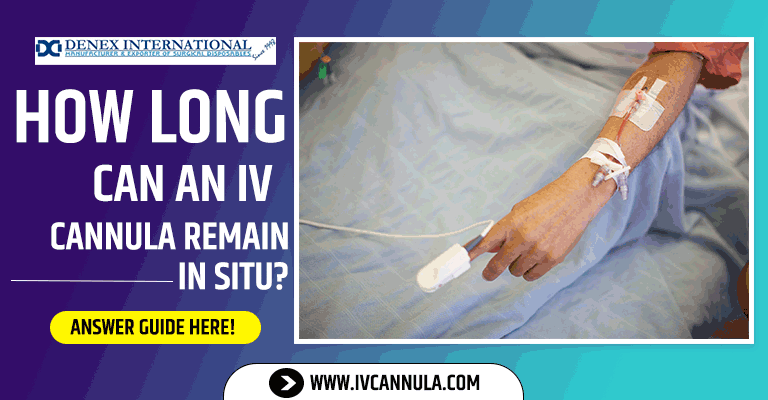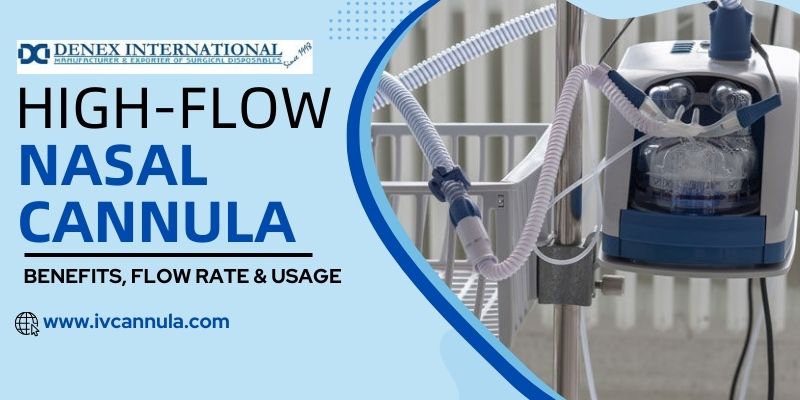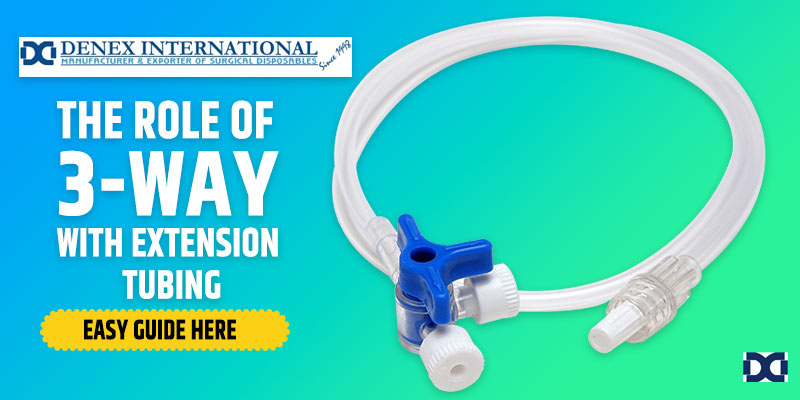In intravenous therapy, the duration an IV cannula can remain in situ is crucial, impacting both patient comfort and medical efficacy. Join us on a journey through the intricacies of IV cannula lifespan as we explore the factors influencing their duration and unveil best practices for ensuring optimal patient care. From standard recommendations to assessing complications, this blog aims to be your comprehensive guide, shedding light on a topic vital to the seamless delivery of intravenous therapies. Welcome to an insightful exploration of “How Long Can an IV Cannula Remain in Situ?” with Denex International.
Understanding: How Long Can an IV Cannula Remain in Situ?
The duration an IV cannula can remain in situ or place varies based on factors like patient health, the purpose of IV therapy, and the risk of complications. Typically, it ranges from 72 to 96 hours. Healthcare professionals regularly assess patients and the IV site, considering signs of complications like phlebitis or infection. Adherence to protocols, vigilant monitoring, and prompt evaluation of issues are crucial to ensuring patient comfort and safety during intravenous therapy. Denex International emphasizes these best practices, supporting healthcare professionals in delivering optimal patient care.
Signs of IV Cannula Complications:
Signs of IV cannula complications require careful observation by healthcare professionals to ensure patient safety. Common indicators include:
Phlebitis: Watch for redness, swelling, or tenderness around the insertion site, indicating vein inflammation.
Infection: Monitor for signs of infection, such as warmth, redness, or pus at the IV site. Systemic symptoms like fever may also suggest infection.
Catheter-Related Bloodstream Infections (CRBSI): Be alert to systemic signs of infection, including fever or chills, which may indicate a more severe complication.
Regular and thorough assessment of the IV site and prompt response to any signs of discomfort or inflammation is crucial to identifying and addressing complications early. Adhering to stringent protocols for insertion and maintenance is essential to minimize these risks.
Read Also: A Comprehensive Guide: IV Cannula Sizes,Colors, Flow Rates and Usage
Best Practices for IV Cannula Care:
Best practices for IV cannula care are essential to ensure patient safety and the efficacy of intravenous therapy. Here’s a comprehensive guide:
Strict Adherence to Protocols: Healthcare professionals must follow established protocols for IV cannula insertion and maintenance. This includes utilizing aseptic techniques during insertion and following recommended guidelines for dressing changes.
Regular Patient Monitoring: Consistent monitoring of the patient’s condition and the IV site is crucial. Healthcare providers should routinely assess for signs of complications, such as redness, swelling, or tenderness around the insertion site.
Proper Dressing and Site Maintenance: Ensure the dressing covering the IV site is secure, clean, and changed according to protocol. Proper site maintenance helps prevent infections and complications.
Hygiene and Handwashing: Maintain strict hygiene standards, including thorough handwashing before interacting with the IV site. This reduces the risk of introducing pathogens during care.
Documentation and Communication: Accurate documentation of IV care procedures and regular communication among healthcare team members are crucial. This ensures a coordinated effort in monitoring and responding to the patient’s needs.
Prompt Evaluation of Issues: Any signs of discomfort, inflammation, or complications should prompt immediate evaluation. A timely response is essential to address issues before they escalate.
Education for Patients: Provide clear instructions to patients regarding the care of the IV site. Empowering patients with knowledge of signs to watch for and when to seek medical attention enhances overall care.
Training for Healthcare Professionals: Ensure that healthcare professionals are well-trained in the latest techniques and protocols for IV cannula care. Continuous education contributes to skill enhancement and improved patient outcomes.
By adhering to these best practices, healthcare providers, including Denex International, aim to create a safer and more effective environment for intravenous therapy patients. Prioritizing meticulous care practices ultimately contributes to the success of IV treatments and the well-being of patients.
Read Also: Cannula vs Catheter – Unraveling the Differences by Denex International
Conclusion:
While there are general guidelines for the duration of IV cannula use, individual patient needs and conditions should guide healthcare professionals. Denex International emphasizes the importance of vigilant monitoring, protocol adherence, and regular assessments to maximize the comfort and safety of intravenous therapy patients.
As a leading provider of medical devices, including precision-engineered IV cannulas, Denex International remains dedicated to supporting healthcare professionals in delivering optimal patient care. Stay tuned to our blog for more insights into best practices in intravenous therapy and medical disposables. At Denex, we are committed to advancing healthcare globally.







